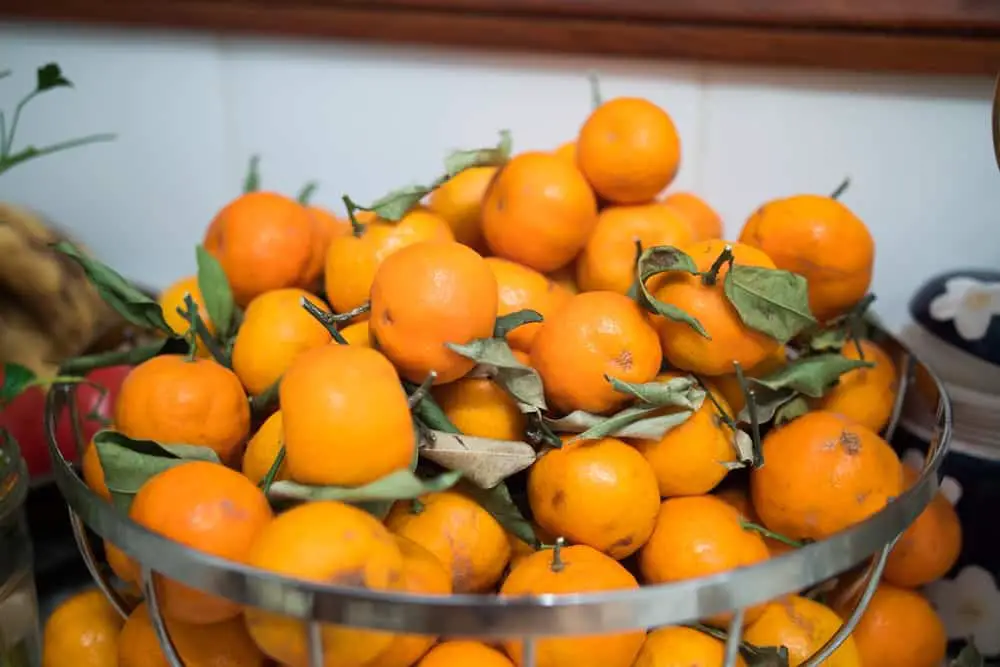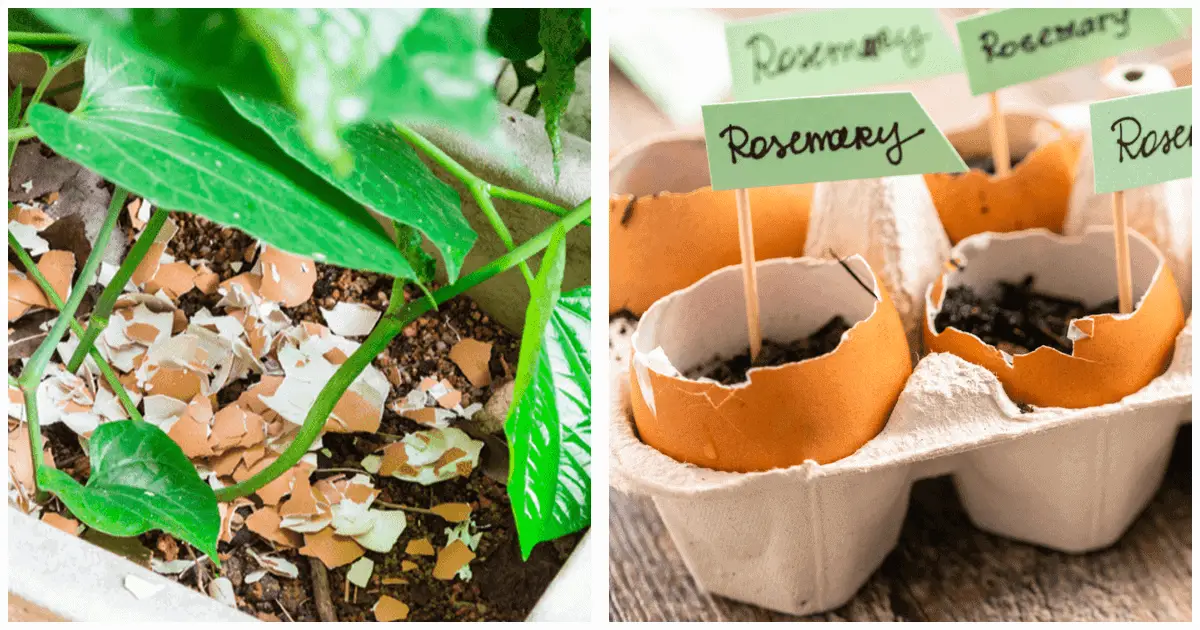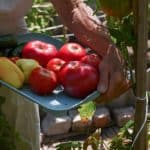A juicy orange, freshly squeezed lemonade, and other delicious citrus fruits are a part of our daily diets.
However, instead of tossing those leftover citrus peels, you can put them to good work in your garden!
Citrus peels not only provide nutrition to the soil and acid-loving plants, but they can also help deter a variety of pests.
There is a myriad of ways to use citrus rinds to make your overall gardening experience more enjoyable and chemical-free.
Read on to learn more!
The 17 Most Useful Ways To Use Citrus Peels In The Garden
There are many types of citrus fruits, which include oranges, lemons, grapefruits, limes, tangerines, and kumquats.
If you choose to repurpose your citrus rinds in the garden, consider using organic ones to avoid exposure to fungicides and pesticides.
Otherwise, you can do the following to remove chemical residue:
- Vigorously scrub the peels and rinse with cold water
- Soak them in a 10% salt water solution for 20 minutes
- Soak rinds in vinegar for 20 minutes
- Soak peels in a solution of 1 teaspoon of baking soda and 2 cups of water for 15 minutes
Now that your peels are clean, the following are useful ways to use them in your garden.
1. Soil Acidifier

Citrus is naturally acidic and therefore can change the pH level of the soil to better support acid-loving plants. Many fruits and vegetables grow well in soil with a low pH that is less than 7 (neutral).
Your local extension or gardening store can help you test your soil for acidic levels. You can also try it at home:
- Put 2 tablespoons of the soil into a bowl.
- Moisten it thoroughly with distilled water.
- Add ½ cup of baking soda.
- If it fizzes, the soil is acidic.
- If it doesn’t, then your soil is neutral or alkaline and will benefit from the addition of citrus.
Fruits, vegetables, and herbs that thrive in acidic soil include the following:
- Blueberries
- Strawberries
- Tomatoes
- Sweet corn
- Cucumbers
- Onions
- Squash
- Peppers
- Lettuce
- Garlic
- Oregano
Making Citrus Powder
As an acidifier, citrus works best if it is dried or dehydrated.
Here’s what to do:
- Heat your oven at the lowest setting (less than 200°F).
- Zest or chop up your citrus peels as small as possible.
- Spread the citrus zest in a thin layer on a parchment-lined baking sheet.
- Bake the zest with the oven door slightly open until it is dried and crispy.
- Typically, zest will take 30 to 60 minutes.
- Allow it to fully cool.
- Use a food processor or coffee grinder to turn the rinds into powder.
- Sprinkle the powder around the topsoil base of your acid-loving plants.
- Lightly mix it in.
Tip: Store your cooled and dried citrus powder in an airtight container in a dark location for up to 1 month.
2. Nutritious Soil
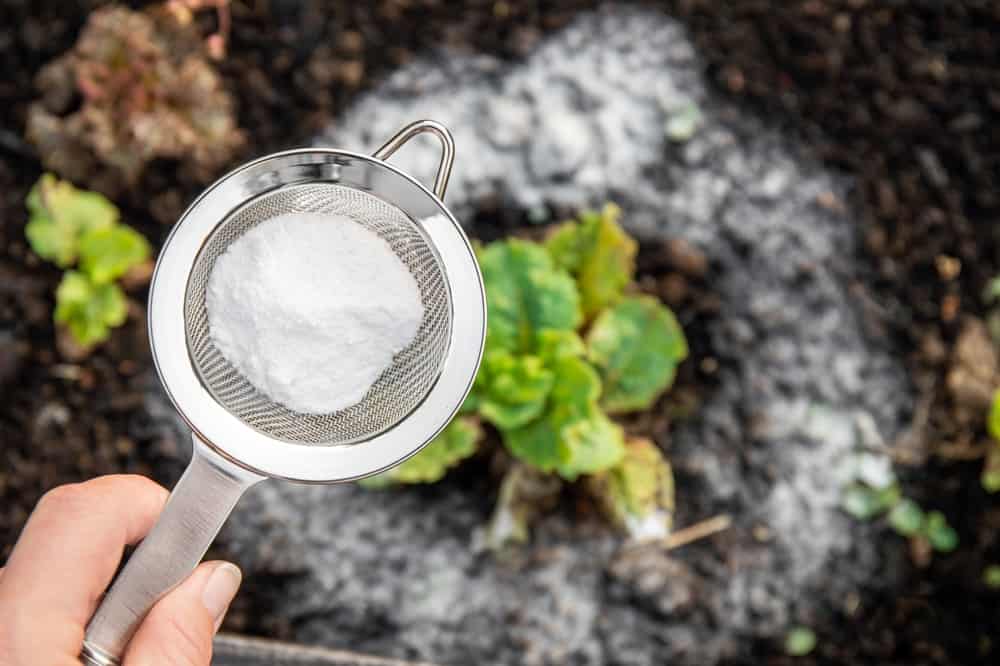
Citrus peels are a great source of nitrogen, phosphorus, and potassium (N-P-K), as well as sulfur, magnesium, and calcium, which all plants need to thrive.
If your plants are tolerant of acid, you can make all of your soil nutritious by sprinkling dried rinds or powder throughout your garden.
3. Compost Additive
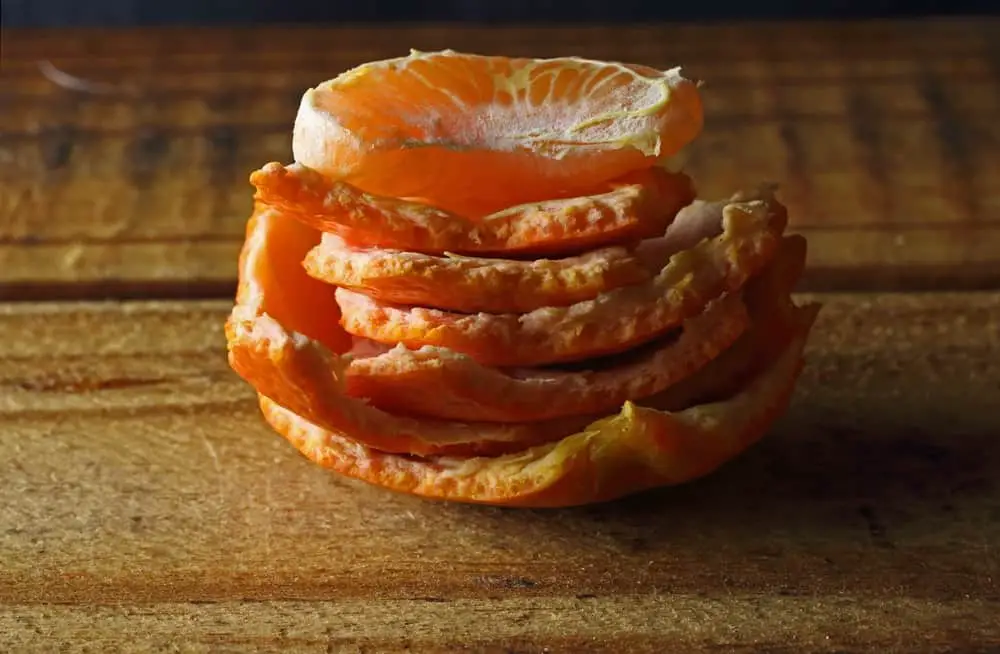
Citrus peels can be tossed into your compost pile.
Some people feel that citrus oils may slow down decomposition, but typically it is just that the rinds themselves take a while to break down. This is because they can take up to 6 months to decompose.
Therefore, when adding citrus to compost piles, cut down them into smaller pieces to help them break down faster.
4. Pest Repellant Spray

You can make an organic, natural citrus spray to keep pests away. Citrus has a component called d-Limonene that repels many insects and animals.
Keep in mind that a spray will need to be reapplied frequently, as well as after rainfall.
What To Do
- Fill a glass jar about halfway full with small pieces of citrus rinds.
- If desired, you can add 1 teaspoon each of garlic and cayenne pepper to the mixture for more potency.
- Boil enough water to fill the jar.
- Top off the jar with the boiling water, and let it sit for 24 hours in a warm or sunny spot.
- Strain the peels out, keeping the water.
- Pour the citrus water into a spray bottle.
- Add a few drops of Castile soap or dish detergent to the water.
- Shake and spray on affected plants, directly on insects, and around any holes.
Tip: Test the spray on a plant’s leaves to ensure that it does not cause leaf scorch.
5. Pest Repellent Potpourri

You can make a citrus potpourri to keep in small bowls or sachets around your garden.
You can also hang them from nearby branches or any fencing.
What To Do
Dehydrate, hang items up to dry, or purchase dehydrated ingredients for your natural pest deterrent potpourri.
Make a potpourri mixture using any or all of the following ingredients, including citrus:
- Citrus peels
- Basil
- Star anise pods
- Cayenne and black peppers
- Bay leaves
- Cedarwood sprigs
- Cinnamon sticks
- Cloves
- Eucalyptus leaves
Check the mixture periodically to make sure they do not have mold due to exposure to the elements. Discard if they do.
6. Repel Ticks, No-See-Ums, & Mosquitos
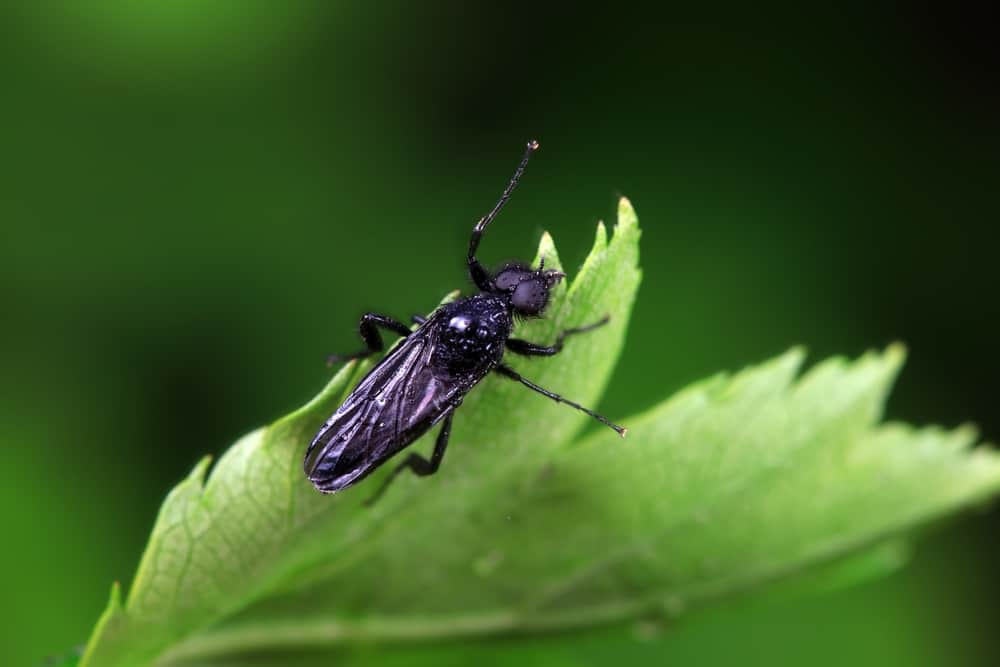
You can repel biting ticks, no-see-ums, and mosquitos from invading your garden while avoiding chemical sprays. Opt for citrus peels from lemons, oranges, and grapefruits.
Place small pieces of peels around plants throughout the garden, or use a spray.
7. Ant Slurry Repellent
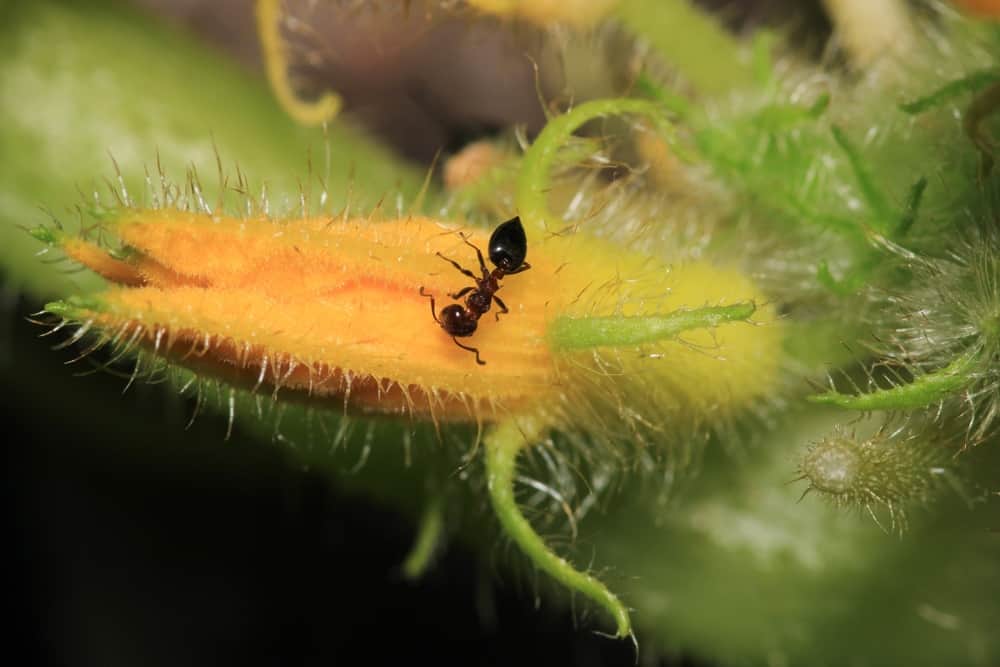
Ants cause issues in the garden. They protect plant-destroying aphids from insect predation, which in turn feeds them a sweet honeydew-like liquid that they secrete.
Ants can also destroy root systems as they build tunnels and nests in the underlying soil.
Citrus oil is toxic to ants, killing them on contact. It also disturbs their scent trails, preventing other ants from coming in.
How To Make A Slurry
Make a citrus slurry to get rid of ants by doing the following:
- Place 2 or 3 rinds in a blender with 1 cup of warm water.
- Blend until it makes a slurry.
- Pour the mixture onto the anthill.
8. Aphid Deterrent
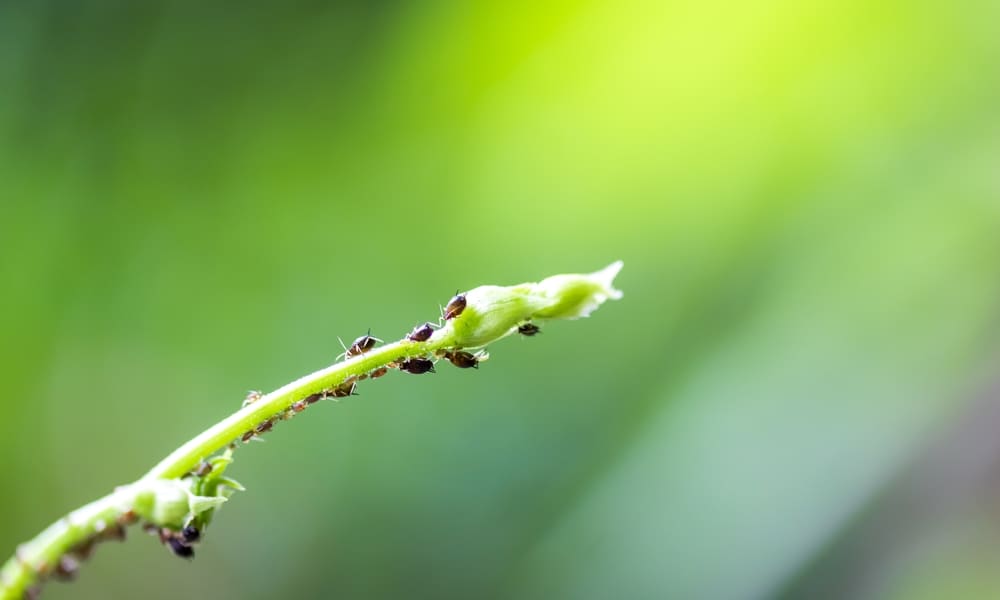
Aphids can destroy your plants by eating away at the leaves. This can result in weakened plants that fail to bloom or produce vegetation, and they may die.
Since aphids are friends with ants, you can keep both away, by deterring the aphids.
Oranges, in particular, help to repel aphids. Therefore, take oranges peels, and cut slits in them.
Hang the peels onto your plants’ leaves and stems. You can also lay strips of peels around the base of plants to keep them from climbing up.
9. Slug Catcher
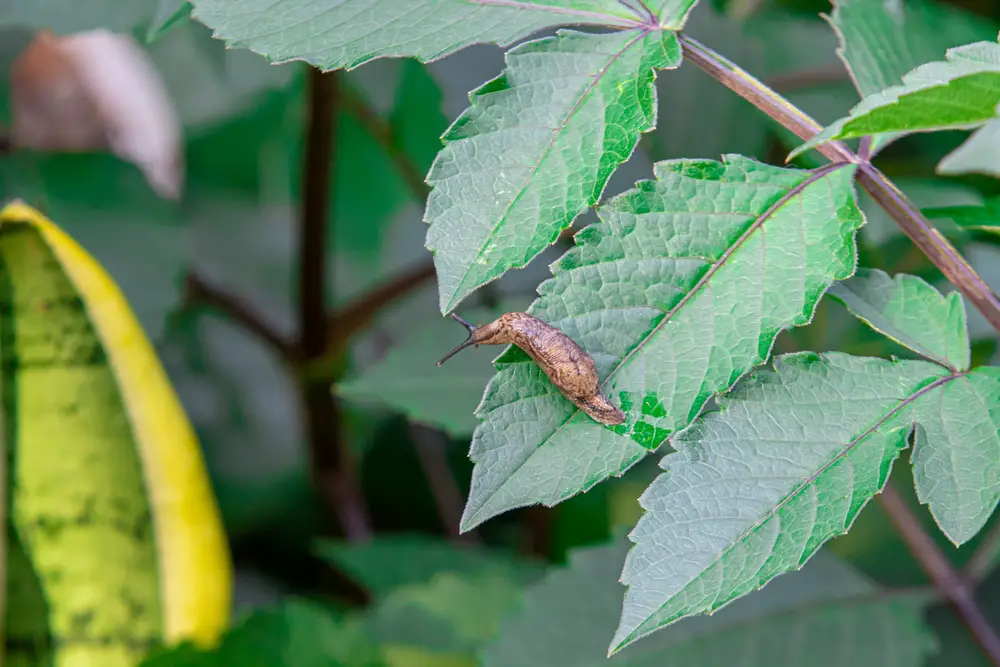
Lemon and orange rinds are a delectable treat to slugs.
Therefore, leave intact halves of rinds underneath slug-vulnerable plants. The slugs will stop eating your plants and move to the citrus.
Once slugs have been collected into the rinds, discard them away from the plants, perhaps to your compost pile.
10. Deter Mice
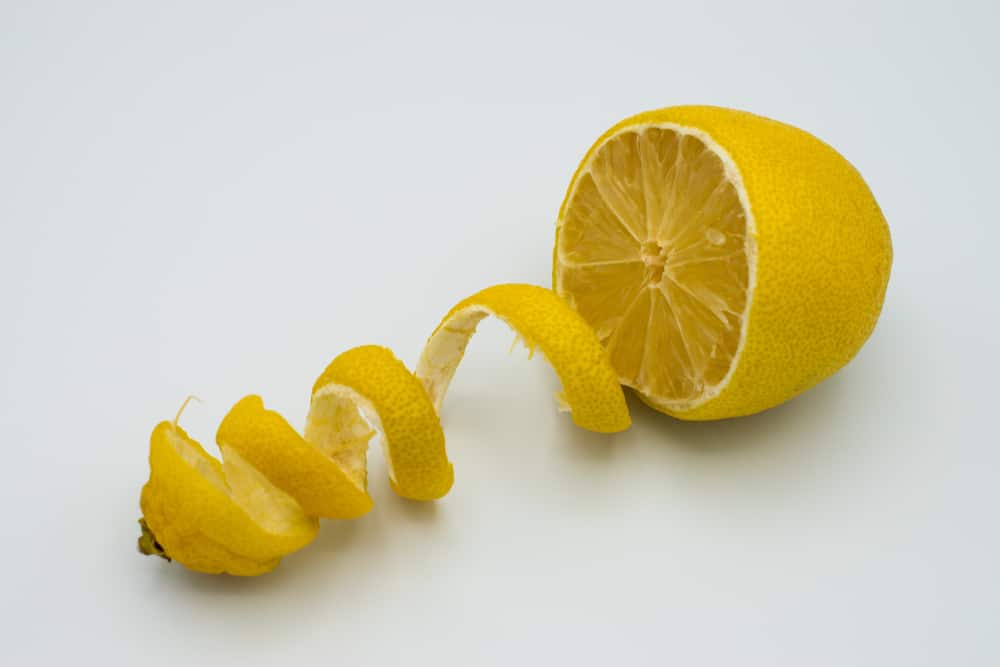
Lemon in particular is offensive to mice.
Sprinkle pieces of rind around your garden, as well as near any mysterious holes. Sprinkle peels around any piles of wood or rocks where mice may like to hang out.
11. Keep Dogs & Cats Away

If you want to keep dogs and cats away from your garden, add citrus. Cats like gardens for their litter box, and unfortunately their feces can pose health risks.
While many dogs and cats simply avoid citrus due to its offending odor, keep in mind that it is toxic to them if it is consumed. You may wish to use a citrus spray.
Dogs also tend to not like the smell of coffee. Coffee is also acidic, and can be mixed with citrus peels and sprinkled around the garden.
12. Attract Pollinators

Citrus is loved by pollinators such as honeybees and butterflies.
Put some citrus peels in shallow bowls for them to visit in your garden. While they are there they will visit and pollinate your plants.
13. Seed Starter Pots

Citrus rind halves can be used as seed starters to grow seedlings.
This video demonstrates how to do that:
14. Freeze Peels For Garden Bed Prep
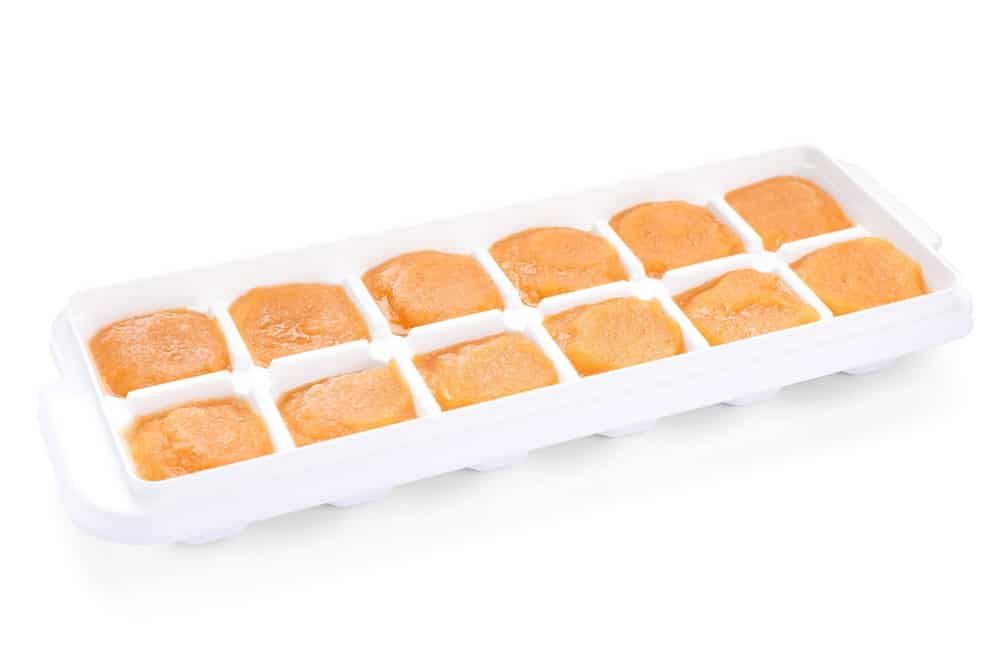
You can keep citrus peel zest or pulp in a freezer-safe container over the winter. Keep adding to it as you eat citrus fruit. Consider freezing them into a covered ice-cube tray.
When it is time to get your garden beds ready for the spring season, “plant” citrus ice cubes into the soil to keep pests away from the start.
If you have frozen a large container of zest, allow it to thaw enough so that you can scoop it out and into the soil.
15. Skin Protectant While Working In The Garden

If no-see-ums or mosquitos are bothering you in your garden, you can rub the peel on your skin. Test it first on a small patch to make sure you do not have a negative skin reaction.
You can also make a spray as mentioned above in #4, but leave out the soap, garlic, and cayenne pepper.
16. Citrus Garden Campfire

If you like to entertain outside, you can add citrus to your garden party.
Citrus is an excellent fire starter. Add dehydrated citrus peels to your campfire and enjoy the scent.
17. Citrus Bird Feeder
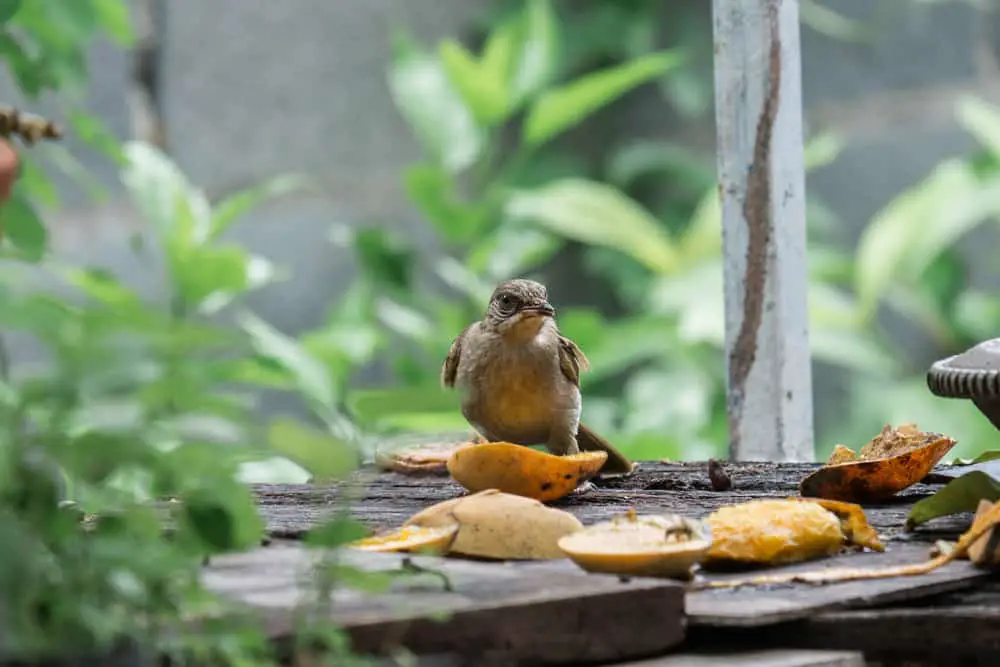
Birds are great pollinators for your garden and fun to watch. Repurpose citrus rinds by turning them into bird feeders.
Do the following:
- Use citrus rind halves to make a bowl shape.
- Use three pieces of string to loop underneath the “bowl” to support it and hang it up.
- Fill it with birdseed.
Conversely, you can poke the end of a shepherd hook into the bottom of a citrus half, and fill it with seed. Or, you can lay them face up on a platform filled with seeds.
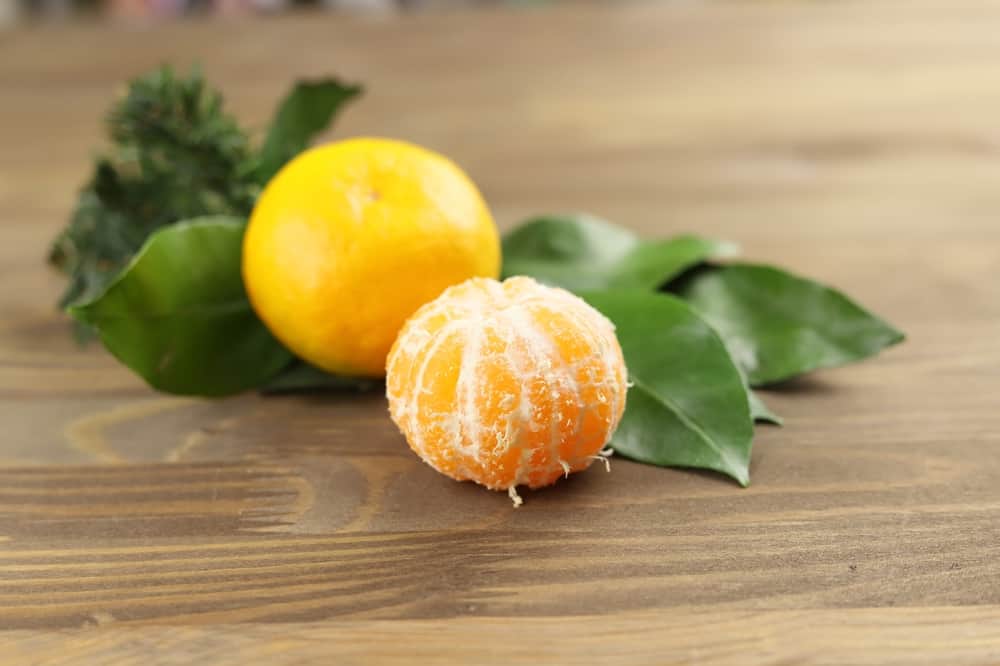
Summary
Citrus is incredibly beneficial to a garden providing nutrients, keeping pests at bay, inviting in pollinators, and more.
So, the next time you think about throwing away citrus peels, save them in your freezer for the planting season.
Or, use the raw peels right away in the garden. Peels can be readily made into sprays, powders, slurries, and more.
